Grass, like all plants, needs light to make its food and grow. Establishing lawns from sod has become increasingly popular over the recent years. It is quicker, reliable, and an excellent option for areas prone to erosion.
Moreover, sod can be laid at any time during the growing seasons, which decreases a lot of hassle that is associated with establishing a lawn from seeds.
However, people often have many questions when it comes to establishing a lawn from sod. For example, is sodding better than seeding? What is the best sod for my lawn?
When should I plant sod in my yard etc.? Another common question that we receive is what is the best sod to grow in shady lawns?
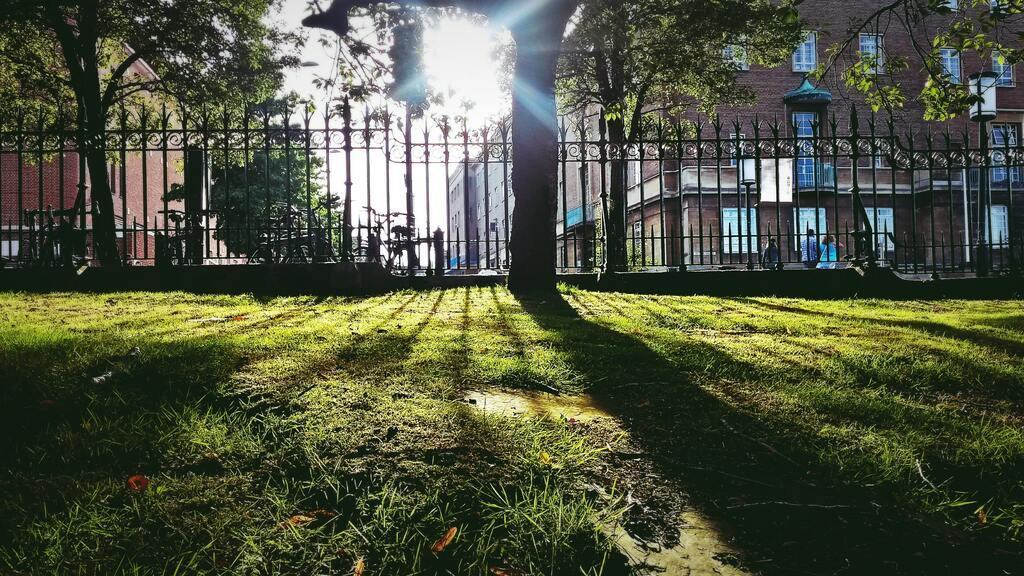
There are many problems when it comes to planting sod in shady spots. Shady spots lack sunlight which the grass needs to make food and grow.
Moreover, shady spots in lawns are often moist, which encourages weed and fungal growth. Thus, you might end up with patchy turf or bare spots in the shaded areas of your lawn.
So, how do you grow sod in shady areas of your lawn? The trick is to choose a sod type that is more tolerant to shade and can do well in moist conditions.
Moreover, you will have to improve drainage conditions in your yard and keep an eye out for fungal attacks if you want your sod to be its best.
Keep reading this article to find out more. We will tell you everything you need to know about planting sod on shady lawns.
5 Best Sod to Put In Shady Areas Of Your Lawn
Who does not love relaxing in the shade of a mature tree in their backyards? However, these shady spots on the lawn become less desirable when you have to deal with weeds, patchy turf, or in some cases, a bare spot due to the lack of sunlight.
Growing grass in the shady spots of your lawn can be quite daunting. However, the task will be much easier if you know what sod to use, and we have got you covered. Here are our top three recommendations:
RELATED: How Much Does Sod Weigh? Transporting & Taking Care Of Your Sod
1. Tall Fescue Grass Sod
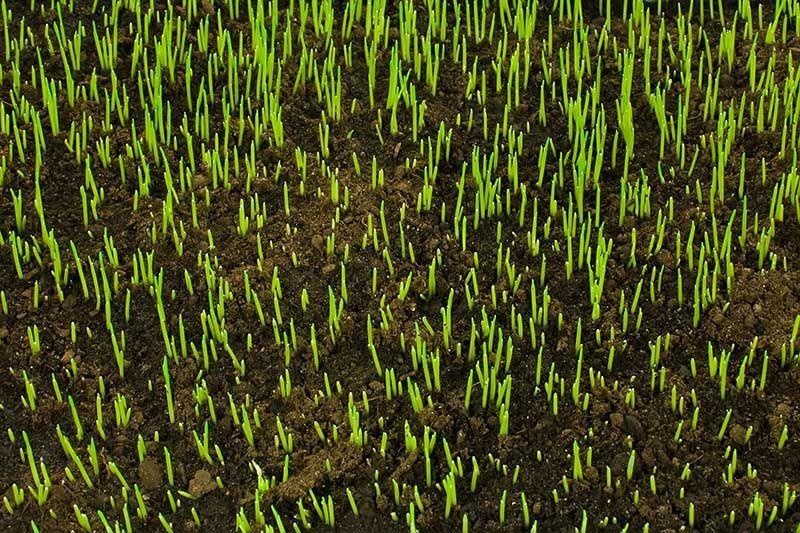
Tall fescue is one of the hardiest grass that you will ever come across. Not only is it extremely shade tolerant, but its drought and frost tolerance is also exceptional.
It has broad leaf blades, which enable it to make the most of the sunlight in shady spots of the lawn. Here are some more facts about tall fescue grass:
| Scientific name | Festuca arundinacea |
| Other names | Kentucky 31 fescue |
| Hardiness zones | 3 to 8 |
| Type | Perennial |
| Growing zone | Cool-season |
| Soil pH | 5.5 to 7.5 |
| Mowing Height | 2 to 3 inches |
| Propagation | Via vertical shoots called tillers |
| Growing temperatures | 70 and 80 °F |
| Soil requirements | Clay soils high in organic matter |
| Sun requirements | 3 to 4 hours per day |
| Maintenance needs | Established lawns are low maintenance |
| Watering needs | 1 to 1.5 inches of water per week |
2. Zoysia Grass Sod
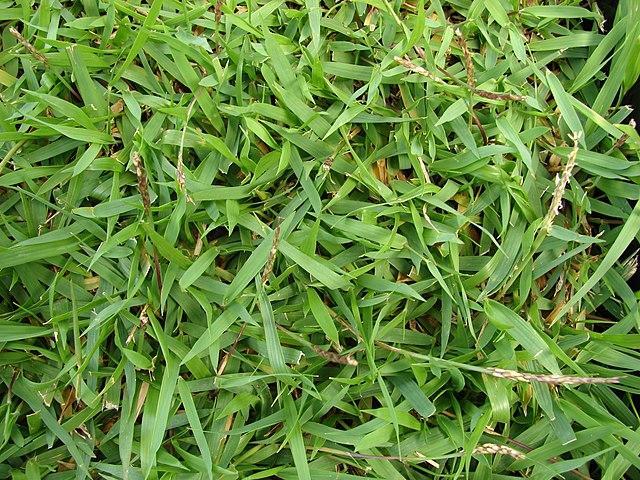
Zoysia is a fine-textured turf grass with a deep, dark, and beautiful emerald color. It has medium shade tolerance and grows well in most soil types.
However, the character that makes it ideal for shady lawns is its aggressive growth. It can choke out most of the weeds on its own, which grow excessively in shady spots.
Look at the table below to see if it is the right choice for your lawn.
| Scientific name | Zoysia spp. |
| Other names | Korean lawn grass, Japanese lawn grass |
| Hardiness zones | 6 to 11 |
| Type | Perennial |
| Growing zone | Warm-season |
| Soil pH | 6 to 6.5 |
| Mowing Height | 2 to 2½ inches |
| Propagation | Via stolons (runners) & rhizomes |
| Growing temperatures | 80 to 95 °F |
| Soil requirements | Well-drained acidic to neutral soils |
| Sun requirements | 4 to 6 hours |
| Maintenance needs | Moderate |
| Watering needs | 0.5 to 1 inch of water per week |
3. Centipede Grass Sod
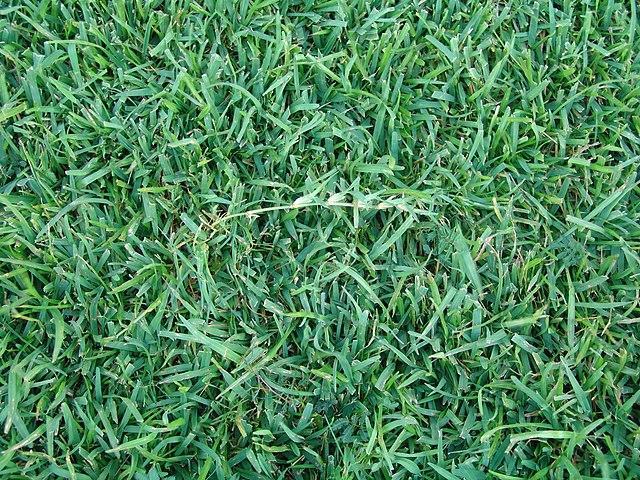
The next sod on our list is that of centipede grass. It is a popular turf choice in the southern part of the United States and is known for its ability to grow well in poor soils.
In addition, due to its slow-growing habit, it is quite low maintenance and a good candidate for your shady lawn. However, centipede grass doesn’t do well in high foot traffic areas.
| Scientific name | Eremochloa ophiuroides |
| Other names | – |
| Hardiness zones | 7 to 10 |
| Type | Perennial |
| Growing zone | Warm-season |
| Soil pH | 5.0 to 6.0 |
| Mowing Height | 1.0 to 1.5 inches |
| Propagation | Creeping above-ground stems (runners) |
| Growing temperatures | 70 degrees F or higher |
| Soil requirements | Sandy or silt soils |
| Sun requirements | 5 to 6 hours per day |
| Maintenance needs | Low maintenance |
| Watering needs | 1 inch of water per week |
4. St. Augustine Grass Sody
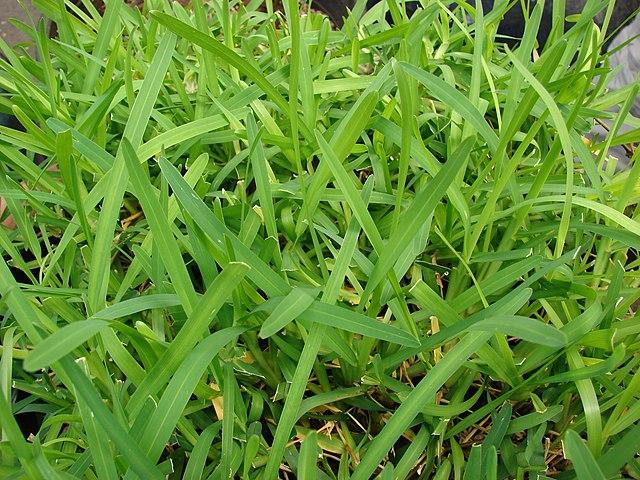
St. Augustine grass is a coarse-textured, spreading grass that is a popular turf choice in Florida and the Gulf states because of its tolerance to humidity and heat.
It stands very well against weeds on its own and forms a dense low-lying mat that only needs occasional mowing. However, its cold tolerance is low, and it is slow to green in the spring.
| Scientific name | Stenotaphrum secundatum |
| Other names | Charleston grass, Buffalo grass |
| Hardiness zones | 8, 9 and 10 |
| Type | Perennial |
| Growing zone | Warm-season |
| Soil pH | 5.0 to 8.5 |
| Mowing Height | 2½ to 4 inches |
| Propagation | Runners and rhizomes |
| Growing temperatures | 80 to 100 °F |
| Soil requirements | Well-drained sandy soils |
| Sun requirements | 4 to 5 hours per day |
| Maintenance needs | Low to moderate maintenance |
| Watering needs | ¾ inch of water twice per week |
RELATED: Dethatching St. Augustine Grass: A Complete Step By Step Guide
5. Rough Bluegrass Sod
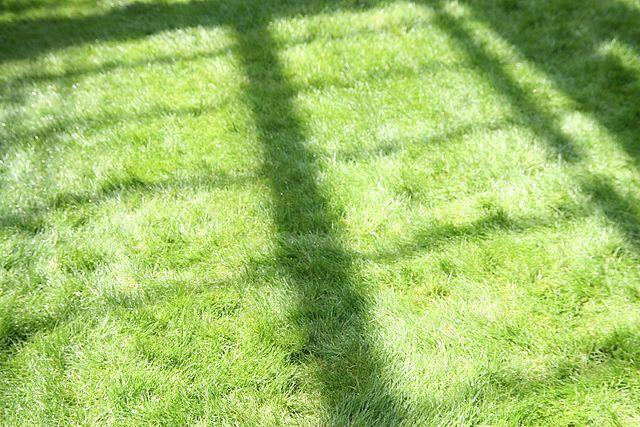
Rough bluegrass is spreading grass that is best adapted to wet, cool, and shady areas. It is often used in combination with perennial ryegrass for winter overseeding of golf courses.
The grass is often confused with Kentucky bluegrass, which has somewhat lower shade tolerance. Rough bluegrass, however, has limited turf use because of its poor heat, drought, and traffic tolerance.
| Scientific name | Poa trivialis |
| Other names | Roughstalk, Rough meadow grass |
| Hardiness zones | 8, 9 and 10 |
| Type | Perennial |
| Growing zone | Cool-season |
| Soil pH | 6.2 and 6.8 |
| Mowing Height | 1” – 2.5” |
| Propagation | Via above ground stolons (runners) |
| Growing temperatures | 40 to 50 degrees F |
| Soil requirements | Moist, poorly drained soil |
| Sun requirements | 3 to 4 hours a day |
| Maintenance needs | Moderate |
| Watering needs | 1 to 2 inches per week |
Tips For Planting Sod In Shady Lawns
Most people do not consider shade much of an issue. They think they can make up for it by proper watering and fertilization.
However, shade can result in inconsistencies in the turf, such as bare spots and color alterations. Shade can also prevent water from evaporating, resulting in moist conditions -perfect for fungal growth.
Too much moisture in lawn soil can also cause root decay which will ruin the health of your grass. This is not to say that you cannot maintain a healthy lawn in shady areas. There are a few things that you can do to keep the grass healthy on your shady lawn.
Mow Your Grass Regularly
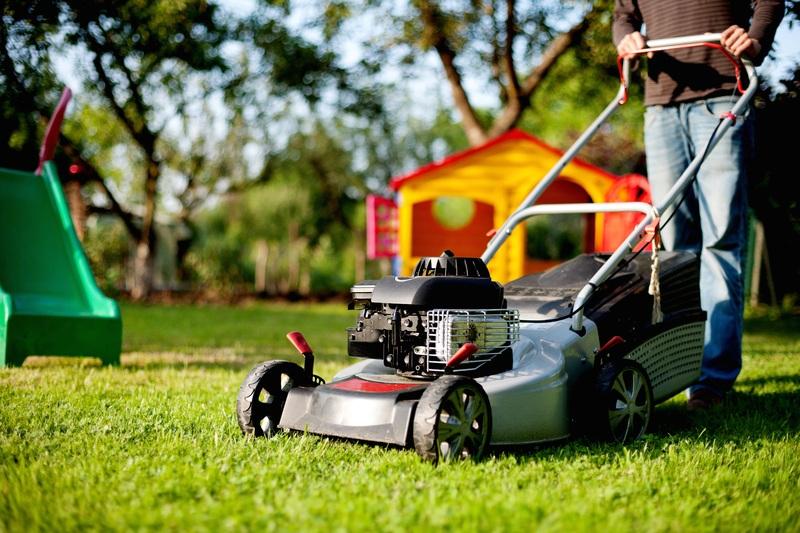
If you have a shady lawn or just a few shady spots in your yard, you will need to mow your grass more frequently in order to keep your grass healthy. It is because grass, like other plants, needs sunlight to grow and make its food.
And when there is already not enough sunlight available in your yard, keeping the grass long will make matters even worse. It will block the sunlight from reaching the young grass and the soil surface.
As a result, the surface of lawn soil will stay moist, which is a perfect breeding place for fungi. Keeping the grass short will not only allow the soil to dry but will also eliminate any fungi-infested grass blades that might be harboring in your yard.
Improve Drainage
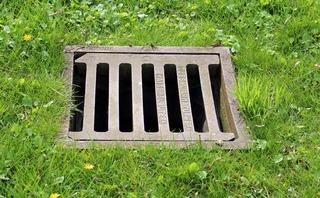
Since sun deficient lawns already have low water evaporation rates, improving drainage conditions is a must. Water puddles on the lawn or saturated soil conditions can suffocate your grass and introduce compaction issues.
So, it is essential that you regularly check the drainage system of your lawn, resolve any blockages and keep the water flowing. You can also solve drainage issues in your yard by properly leveling and grading your lawn.
You can level and grade your lawn on your own. However, it is a tedious and labor-intensive task so choose a long weekend to take this project on.
Limb Up Trees
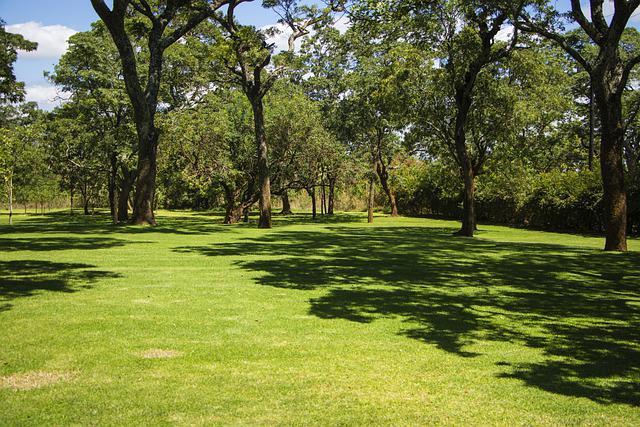
While you do not have to remove trees in and around your lawn, it would help if you could just cut their lowering, hanging, and separate tree branches. It will let more sunlight on your lawn and won’t damage the trees.
Just ensure you do not cut the branches too much, so the tree dies. Also, it is highly recommended that you get a professional to prune the trees around your lawn. Climbing and cutting trees on your own can be a tricky business.
Take Care Of The Falling Leaves
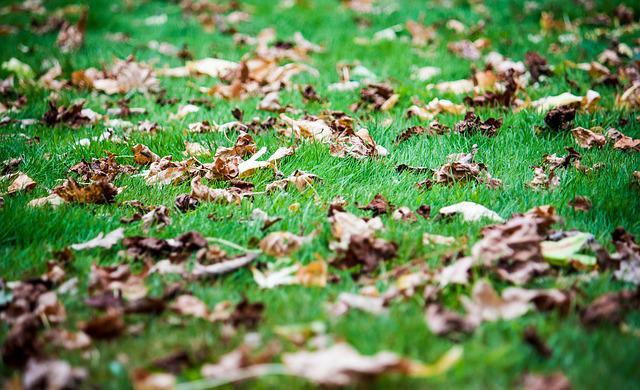
In addition to clearing hanging tree branches around your lawn, you should also be mindful of the falling leaves. This is especially a problem in fall when leaves can sometimes cover the entire surface of the lawns.
So, along with regular mowing, ensure that you also consistently rake your lawn for fallen leaves so your grass can make the best of the available sunlight in your yard.
RELATED: Best Ways to Propagate New Succulents from Leaves and Cuttings
Overseed Inconsistent Patches
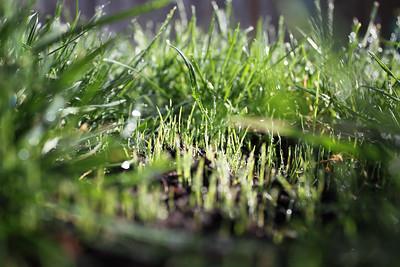
In some cases, inconsistencies will appear despite your best efforts to keep up your shady lawn. There is no need to worry, though. It is nothing you can’t fix. All you have to do is find a sod that grows best in the shade and plant it in the bare spots of your shady lawn.
Next, ensure that you properly fertilize and water your new sod to compensate for the lack of sunlight as much as possible, and soon you will have a uniform turf.
Conclusion | Planting Sod In Shady Areas
Keeping a lawn lush green is hard and keeping it lush green in the shade is even more challenging. However, it is nothing you can’t achieve if you know what to do. Just make sure you plant a shade-resistant sod and adequately care for your lawn afterward.
Frequently Asked Questions (FAQs)
Can sod grow in shady areas?
Grass, like all plants, needs sunlight to grow; however, some grass varieties can keep up healthy growth even without full sun. So, make sure you plant a sod recommended for use in shady areas.
Is St. Augustine or Zoysia better for shade?
When it comes to shade tolerance, St. Augustine grass is the most shade-tolerant of all warm-season grasses. Zoysia grass also has an excellent shade tolerance but ranks lower than the St. Augustine grass.
How do I grow grass in the heavy shade?
If growing grass in a shady area, ensure the site receives some sunlight. Even the most shade-tolerant grasses need 3 to 4 hours of sunlight per day. If it is not the case, look for solutions to increase sunlight duration in your yard and then plant the grass.
Sources for Further Reading
Selecting and Managing Turfgrass for Shade – The Mississippi State University Extension Service
Growing Grass in the Shade – University of Maryland Extension
Growing Turfgrass in the Shade – University of Florida Extension Service







